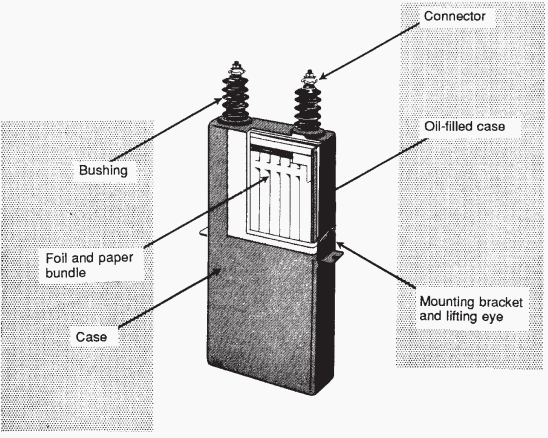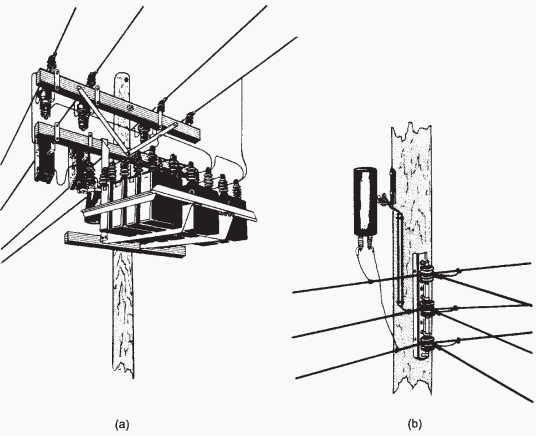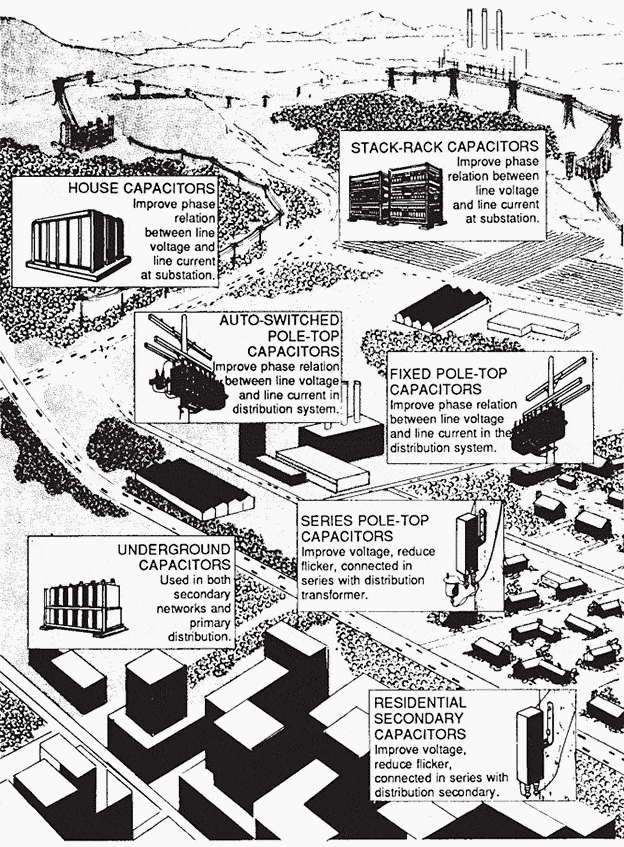
What's so important in role of capacitors in distribution systems? (on photo: Capacitors on 27.6kV deadend pole by Hungry4Power via Flickr)
Power factor
Should the voltage on a circuit fall below a specified level for some reason, a device called a capacitor can momentarily maintain the voltage at line value. Basically, a capacitor serves the same purpose as a storage tank in a water system.
By maintaining the water in a storage tank at a definite level, the pressure on the water supplied by the system connected to it is maintained evenly.
The power factor is an important essential of electricity. At this point, let it suffice to say that keeping the power factor close to 1 is a considerable economic advantage to the utility company and to the consumer. Inductance is the element in the circuit which is pulling the power factor below 1.
Capacitance is the enemy of inductance. Therefore, capacitors counteract inductance, keep the power factor close to 1, and save money for the utility company.
The capacitor usually consists of two conductors separated by an insulating substance. Among other materials which may be used, a capacitor can be made of aluminum foil separated by oil-impregnated paper (see Figure 4-22), or synthetic insulating materials.

Figure 1 - A primary capacitor
Capacitance is the property of a capacitor. Capacitance depends on the area of the conductors, on the distance between the conductors and on the type of insulating material used.
Introducing inductance (or an inductor) into a circuit causes the current to lag the voltage in phase. In most power applications, inductance prevails and reduces the amount of pay-load power produced by the utility company for a given size of generating equipment.
The capacitor counteracts this loss of power and makes powerproduction more economical.

Figure 2 - Pole-mounted capacitors. (a) Primary and (b) secondary
Capacitors are mounted on crossarms or platforms (see Figure 2) and are protected with lightning arresters and cutouts, the same as transformers. Figure 3 illustrates the many uses that are made of capacitors.
How capacitors are used

Figure 3 - How capacitors are used
Reference: Guide to Electrical Power Distribution Systems – Anthony J. Pansini, EE, PE; Life Fellow IEEE, Sr. Member ASTM